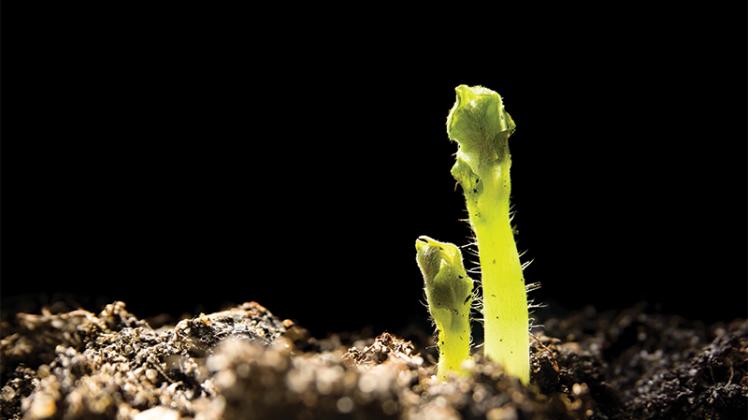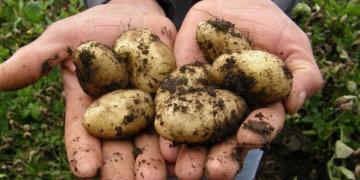Información Técnica: The quest for a definition
Plant biostimulants benefit soil health and are correlated with improved yields. How do we get them into the hands of more farmers?

Each year, farmers hear about new and exciting published research on plant biostimulants, but there seems to be a disconnect when looking at product labels.
Where are all of the innovative new agricultural products? The problem lies in the outdated pesticide laws from 1958 called the Federal Insecticide, Fungicide, and Rodenticide Act (FIFRA). Basically, FIFRA treats all crop-related products that increase (or retard) plant growth as a plant regulator, which is controlled with pesticides under FIFRA. This pesticide law is overly broad in scope and captures all products applied to plants, then excludes those not known as pesticides, like fertilizers. The fertilizer exemption from FIFRA seems logical, as fertilizers provide nutrients that help plants grow.
Unfortunately, plant biostimulants are a relatively new crop category and are not explicitly excluded from the old pesticide law.
The result is plant biostimulant products are stuck in a gray area, where no laws exist to regulate them correctly.
Russell D Taylor President Humic Products Trade Association Headshot
Russell D Taylor, president of the Humic Products Trade Association
DEFINITIONS AND CLAIMS
Understanding what is defined as a biostimulant and how they benefit plants is essential to how they are regulated. Unlike fertilizers, the benefits of biostimulants are unrelated to their nutritional content. When applied to plants, seeds or soil, plant biostimulants help the plant achieve its maximum yield or growth by reducing stress or improving plant nutrition.
Plant biostimulants cover a broad category of products, including familiar products like microbial inoculants, amino acids, seaweed extracts, plant extracts, and humic and fulvic acids.
So what kind of product is considered a biostimulant? The nuances of pesticide law exclusions also rely on the intent of product use and claims. For example, recent research indicates that humic and fulvic acids help increase yields, alleviate abiotic stress from heat or salt, and increase nutrient value in some plants. Generally speaking, the current laws do not allow product label claims to reflect these observed benefits. The divergence between label laws and published research frustrates manufacturers, and farmers, as you can’t advertise possible product benefits.
Research supports the effectiveness of humic acid used for potato production. In potatoes, humic acids have long been used to help improve phosphorus uptake, especially given the fact that the potato plant can be inefficient in the acquisition and uptake of this nutrient.
Another study indicates that foliar application of humic acid can enhance potato plant growth and improve photosynthesis parameters and fresh tuber yield under different water deficits under greenhouse conditions, which represents an opportunity to improve crop production and sustainable agriculture in arid and semi-arid regions.
In yet another study, humic acid was applied to soil planted with potato crops to decrease the level of the fertilization program. The two humic acid doses under the different fertilizer applications improved vegetative growth, yield and tuber properties.
In a study entitled “Influence of Humic Products on Soil Health and Potato Production,” research trials were conducted over a 17-year period to evaluate the efficacy of different commercial humates on potato production. Research found that, collectively, the consistent use of good quality products in their replicated research plots in different years resulted in a yield increase from 11.4% to the maximum of 22.3%.
IMPROVING THE SOIL
When it comes to growing potatoes and other crops, fertilizer isn’t the complete answer, unfortunately, as plant nutrients do not improve soil health. Fertilizers are designed to add nutrients to the soil and support plant nutrition. A biostimulant works as a supplement to fertilizer to enhance nutrient uptake, improve nutrient efficiency and assist= tolerance to abiotic stress. Conventional fertilizers have little effect on = improving soil characteristics as most nutrients are made from salt based fertilizers.
In contrast, some plant biostimulants can improve soil characteristics and affect the plant rhizosphere for better growing conditions. Some biostimulant products support root system growth, so fine roots can penetrate surrounding soil more effectively for improved water infiltration. Plant biostimulants can also positively affect the availability of plant nutrients that occur naturally in the soil in addition to those added by fertilization.
Simply put, biostimulants can be defined as any material, substance, or product that, when applied to plants or soil, can help improve growing conditions or nutrition for the plant. Biostimulants help a plant to achieve its genetic potential by decreasing the effects of variables that can reduce growth or yield.
Biostimulant benefits are correlated with increased crop yields; enhanced crop or plant performance by improving tolerance to abiotic stress factors like drought, heat or salinity; improved root structure and function; enhanced seed germination and plant emergence; increased soil nutrient retention and availability; increased soil water holding capacity; and improved nutrient use efficiency.
Plant biostimulants can also be readily incorporated into existing agricultural practices, like fertilizer combinations and foliar sprays, and can be used in conventional and organic crop production. Recent research from the University of Tennessee indicates that macronutrients, such as nitrogen fertilizers like UAN32, are conserved when blended with humic acid to increase crop performance.
Based on these findings, one might expect unwavering support of the biostimulant market, yet manufacturers still face hurdles in getting their products into the hands of farmers.
That being said, the plant biostimulant market is on target to reach $6.79 billion by 2030, highlighting biostimulant products’ efficacy and demand.
REGULATION WOES
Currently, a good deal of legislative, regulatory and guidance activity is underway, with various industry coalitions coming together to educate and advocate for biostimulant use and remove the barriers to gaining market access efficiently.
Current law divides regulation into two categories: pesticides and fertilizers. Unlike pesticides, which are regulated at the federal level by the Environmental Protection Agency (EPA), fertilizers are only regulated by states. Because biostimulants are neither a fertilizer nor a pesticide, there is confusion as to who is responsible for biostimulant regulation.
Marketing and regulating plant biostimulants is complicated because biostimulants do not have a regulatory definition at the state and federal levels and are not recognized as an independent class of products. Federal and state regulatory agencies and industry representatives are trying to define biostimulants and are offering regulatory and nonregulatory approaches to address labeling and product availability.Parties are looking to determine a responsible approach that builds industry credibility, creates “one label” for all states, attains global regulatory consistency and forges a pathway for product certification standards and criteria.
In May 2022, the Plant Biostimulant Act was authored by U.S. Rep. Jimmy Panetta and sponsored by U.S. Rep. Jim Baird. This bipartisan bill will help pave the way to a consistent and predictable path to market for plant biostimulant products in the U.S.
The bill seeks to establish a national, uniform definition for plant biostimulants, amend the FIFRA to exclude plant biostimulants from being regulated under the act, establish a definition of nutritional chemicals, and require the EPA to review and revise existing regulations to include the new plant biostimulant definition. The bill also helps further biostimulant legitimacy by requiring the USDA to study how plant biostimulants contribute to soil health.
REACHING FARMERS
Biostimulant manufacturers are eager to share with farmers why their products are a valuable tool in their management program and fully describe how they work. Their goal is to make these products more accessible to farmers so that they can sustainably produce more foods while protecting the environment. Creating more transparency will help farmers know what they are buying and make them more willing to adopt new agricultural practices.
The Association of American Plant Food Control Officials (AAPFCO) has laid out labeling guidelines that can help offer product transparency to farmers. AAPFCO is promoting uniform and effective legislation, the new Beneficial Substances Bill, which will create standardized definitions and models through the development and promotion of uniform labeling and safe use of fertilizers and biostimulants and is expected to go into effect in 2023.
“The new uniform bill being created for beneficial substances helps clarify the claims and labeling requirements for products that have benefits beyond their plant nutrition,” said Nick Young, environmental program manager for the California Department of Food and Agriculture. “Growers will see products that are uniform and may allow expanded claims, based on efficacy data, beyond previous products labels, such as impacts on nutrient availability or improving environmental conditions, like drought tolerance or heat stress. Products like plant biostimulants will be regulated in a manner that protects the growers, while expanding the products available to assist in the challenges of growing crops.”
The EPA is drafting guidance for regulators to interpret FIFRA to better describe what is and what is not a pesticide. This forthcoming guidance, along with the proposed Beneficial Substances Act, will be put into effect to support the regulation of this crop input category, paving the way for a sustainable farming future with more nutrient-dense crops and better yields.
Revised product labels that comply with the new laws will take some time to make it to agricultural dealers and farms. Still, all indications provide hope that farmers can get accurate and reliable information from plant biostimulant manufacturers in the near future.
Fuente: https://spudman.com/article/the-quest-for-a-definition/




